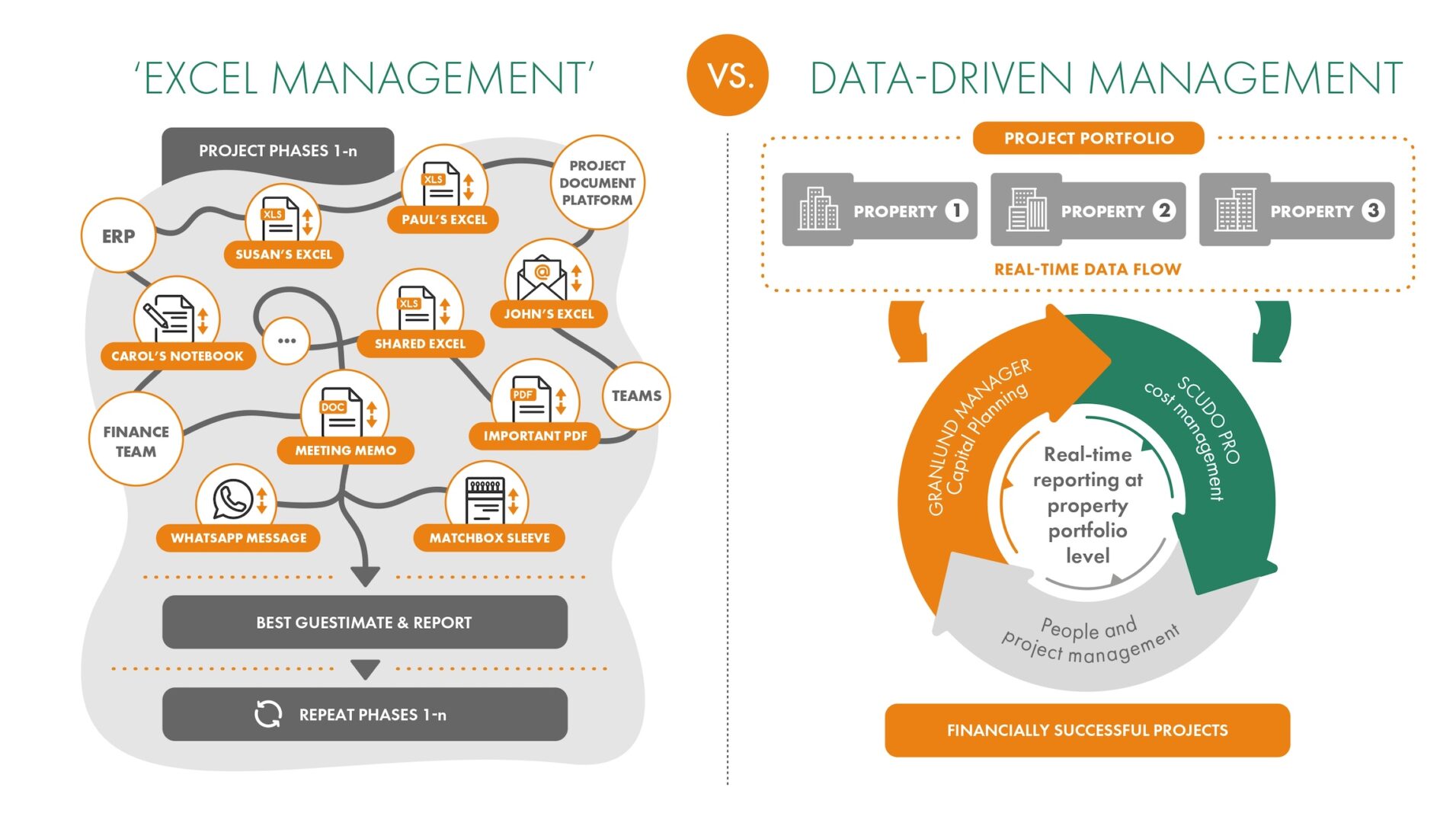Why ‘Excel-driven management’ fails in real estate capital planning
7.1.2025 – Decentralised systems, outdated data and inadequate cost control are a certain path to exceeding real estate project budgets. How long can this approach continue before resources and outcomes are impeded by the limitations of Excel-driven management?

Cost control is at the heart of successful long-term capital planning. Without tight cost management, projects and, eventually, the organisation itself are at risk. Studies show that up to 70% of real estate projects exceed their budgets (Flyvbjerg, 2014)1.
At Granlund, we refer to a style called ‘Excel management’. It describes a method in which projects and costs are not proactively managed but merely tracked reactively. While Excel is a trusted (and beloved) tool, its role in today’s complex real estate projects is increasingly under scrutiny.
In a world driven by fragmented data, managing projects becomes a daunting task. Multiple files and tools lead to confusion, turning planning and execution into a challenge.
But what if there was a better way?
Why Excel-based capital planning doesn’t work
Long-term capital planning is the foundation of successful real estate management. It lays the groundwork for proactive planning and resource optimisation. But in an Excel-based world, this valuable tool often becomes just another row in a chaotic spreadsheet. One no one can truly make sense of.
Research by IBM (2018)2 shows that using digital cost management systems can improve project cost efficiency by up to 23%. Excel simply isn’t cutting it anymore in the fast-paced, data-driven world we live in today.

Have you tried Excel management, too?
Despite its limitations, Excel management remains the go-to method for many organisations when it comes to long-term capital planning. However, it comes with a price. Decentralised data makes leadership difficult and multiple files and tools turn planning into a nightmare.
Manual data maintenance leads to budget overruns or under-resourced projects. Upcoming, predictive maintenance needs and associated costs often remain hidden or unreliable. Multiple people maintaining Excel files means the data is rarely up-to-date and often dependent on a single person’s input.
Consistency and transparency remain elusive when each project team member sees a different version of the data – or worse, no data at all.
One of the hallmarks of Excel management is reactivity when it comes to budget tracking and issue detection. Budgets aren’t actively managed, they are reported on too late. By the time problems are noticed, they’ve already grown too large to fix.
Consistency and transparency remain out of reach when different versions of the data exist. Sometimes those versions don’t even communicate with one another.
Say goodbye to Excel management
Granlund and Scudo Solutions have worked together for a long time to advance digitalisation in the real estate and construction industries. Our Capital Planning solution, powered by Granlund Manager and Scudo Pro, is the answer to free organisations from Excel management.
One of the four Modules in the real estate management software solution Granlund Manager, Capital Planning enables better decision-making, more efficient resource use and financial success in projects. With our integrated cloud-based service, real-time data updates eliminate the need for multiple Excel sheets.
Step into the future of capital planning and leave Excel behind. With the seamless Granlund and Scudo cloud integration, projects become more efficient, transparent and cost-effective than ever before!
Authors:

Topi Korpela
Commercial Director
Granlund Group
040 845 1707
firstname.lastname@granlund.fi

Henri Lähdesmäki
CSMO
Scudo Solutions Oy
+358 50 593 4653
firstname.lastname@scudo.fi
Sources:
1 Flyvbjerg, B. (2014). What You Should Know About Megaprojects and Why: An Overview. Project Management Journal, 45(2), 6–19.
2 IBM. (2018). Project Performance Research: Digital Tools and Cost Efficiency in Project Management.